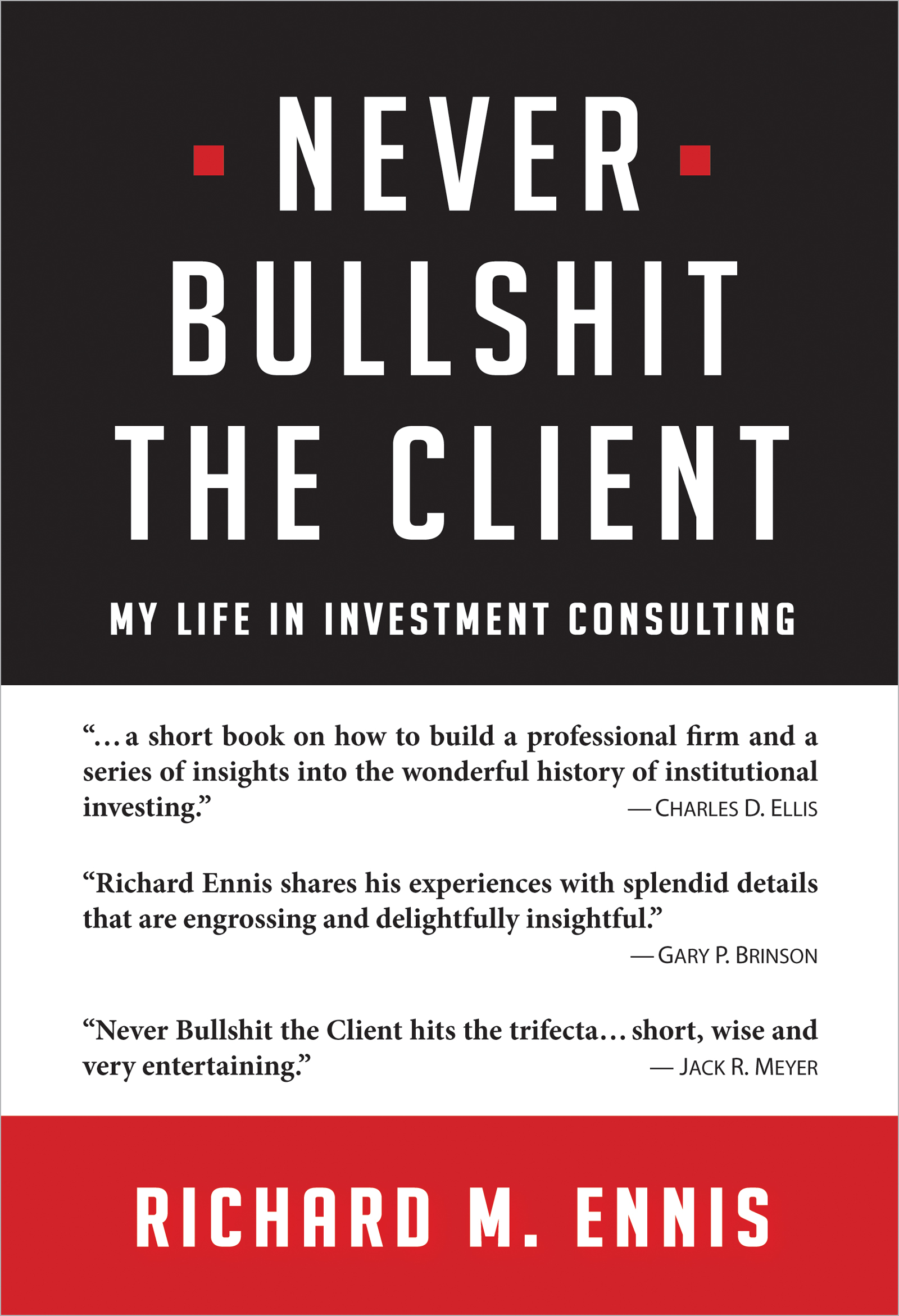How to Sell Services
In Never Bullshit the Client, I write about selling services, which is different from selling products. While I don’t claim to be an expert on selling services, I did learn a few things during my 40 years at it. Here is an excerpt from the book:
A firm’s culture should be reflected in all its activities, including the way it sells its services. In my experience, most consulting firms could be more effective in the sales process. They typically submit a proposal that describes the firm’s history, philosophy, approach, strengths, personnel and which typically includes a client list. Then the firm, along with one or two others, appears before a committee for about 45 minutes and try to close the deal. It is at this point, in my opinion, that many go astray. They stand before the committee and often repeat the same stuff that they put in the proposal, perhaps with the aid of a slick PowerPoint presentation.
There are two weaknesses to this approach. First, you are wasting valuable exposure to the decision makers. Second, and more importantly, you are selling to people who have to decide whether or not to trust you as their advisor. We all know what it feels like to be on the receiving end of a well-rehearsed sales pitch. We are on our guard. We are not open. We are not...trusting.
Whenever possible I approached a finals presentation like this:
Our team would get information from the prospect to help us understand their investment program as well as possible in a short period of time. This might include the current statement of investment policy, a recent asset allocation table, a list of investment managers and a recent performance report. We would put a team together to review the material and come up with what would be our principal recommendations were this a new client. These recommendations might be to introduce or substantially increase index fund investments; introduce or increase international diversification; and / or eliminate an unintentional style bet arising from their allocations to various active managers. Whatever they were, we dealt with the client’s circumstances.
In the finals presentation itself we would skip the preliminaries about our firm entirely — just Hi and How do you do to get things going. We would take 5 minutes to explain what we knew about their investment program from our research and not more than 10 minutes to lay out our “recommendations” in bare-bones terms. That left them half an hour to question the logic underlying our recommendations and for us to have a conversation. The beauty of this is that we were talking about them, not us; and we were talking about investment concepts, not how great we were. This approach gave the prospect an opportunity to “road test” us.
No prospect was ever put off or even mildly surprised by this approach. It was as natural as can be for them to engage in this way. It was as if we were consulting with them already. And if we were the right firm for them, there was no quicker way to get to Yes.
A side benefit of this approach to sales is that it is less stressful and more fun. You’ll look forward eagerly to these pitch opportunities.
In short, the keys to selling professional services are (1) be the product and (2) earn trust. Let the competition try to convince the buyers that they are polished salespeople. And talk themselves right out of the job.
This approach can be adapted to selling investment services and to the conduct of consulting relations, as well. There too, as much as possible, be the product rather than try to sell the product.
How to do this? Three ways:
- Know the strategy.
- Embody the firm.
- Help in understanding.
Get to know your firm’s strategies as thoroughly as you can. This knowledge legitimizes you in the eyes of the buyer. Your status as an investment professional is only as good as how knowledgeably you—you, personally—are able to describe the goods on offer.
Study your employer’s business—not just the people and facts but the ethos of the organization, as well. Think and speak in first-person plural. Seek to embody the firm—its approach, its values, its spirit—as best you can while remaining true to yourself.
You have a story to tell—a good one. Forget about selling it, and instead put yourself in the shoes of the buyer. The most brilliant communicators understand how their audience is likely to have trouble grasping the material. Help the prospect or consultant you are dealing with clearly understand it. Develop an appreciation of the buyer’s thought process. Work from that point of view.
And, finally, if you find yourself getting all salesey, just think about turning the bubble machine down a few notches. You will never regret it.
* * *
Two years ago I retained a firm to represent me in a real estate transaction. In my first interaction with the firm, the individual assigned to work with me made a salesey statement regarding a material fact. But it was over the line from salesey; it was just plain false. He must have thought he was taking a minor liberty with the facts. I didn’t; I fired the firm straightaway. I soon received a call from the head of the firm, wanting to know what went wrong. I told her. She said, “Oh, that’s just the way we talk.” Just the way you talk??!!
I realize I am an old retired guy who wouldn’t know a “solution” from a “platform,” and to whom much contemporary investment-speak sounds like so much blustery jargon. But we all have a pretty good ear for bullshit, don’t we? So express yourself—in your own voice—as earnestly and plainly as you can. Trust me: no one will object.

